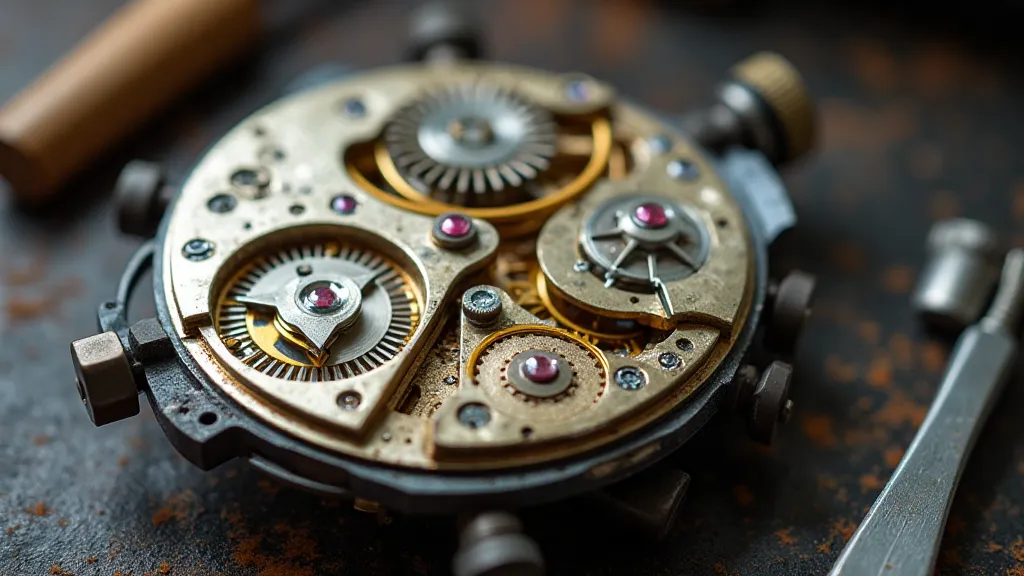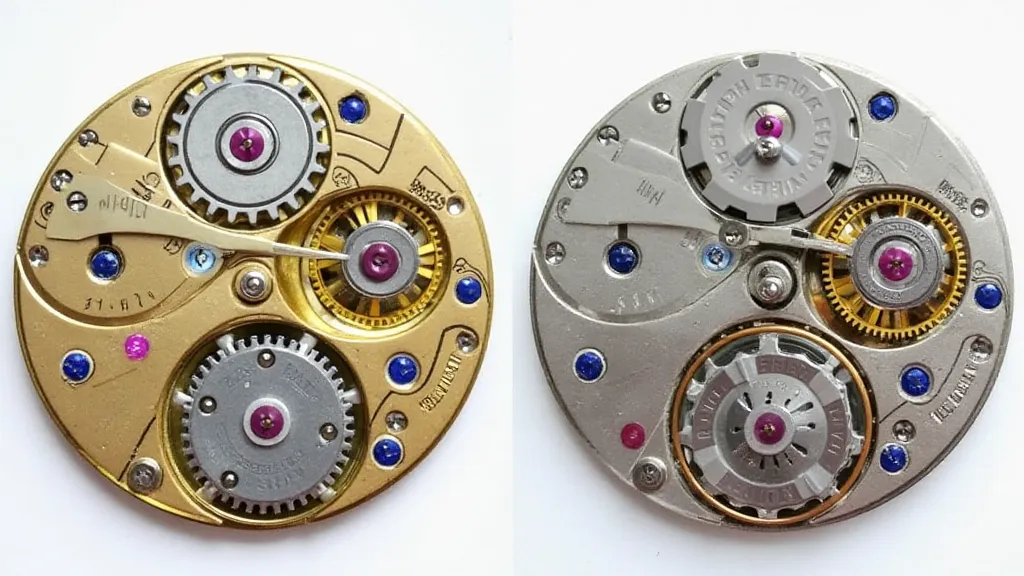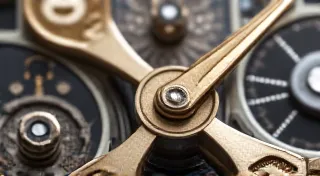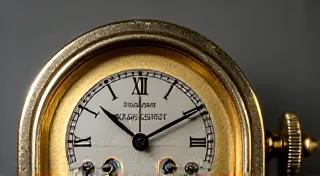The History of the Landeron Calibers: A Legacy of Chronograph Innovation
Landeron, a name synonymous with robust and reliable chronograph movements, holds a significant place in the history of watchmaking. While often overshadowed by the giants like Rolex and Patek Philippe, Landeron’s contributions to the development and proliferation of chronographs are undeniable. This article delves into the history of Landeron, exploring their key calibers and examining their lasting impact on mechanical watch collecting and repair. Understanding the lineage of these movements can be complex, requiring a deep appreciation for the nuanced evolution of horological design - a journey much like that undertaken by a dedicated “cartographer of chronos,” carefully tracing the history of lost movements through the eddies of time.
Early Years and Origins (1886-1920s): Establishing a Foundation
The story of Landeron begins in 1886 in La Chaux-de-Fonds, Switzerland, a region at the heart of Switzerland's watchmaking industry. Founded by Jules P. Landeron, the company initially produced ebauches (unfinished watch movements) and components, primarily for other manufacturers. This early involvement gave Landeron invaluable experience in understanding the intricacies of movement design and production, laying the groundwork for their future role as a key movement supplier.
The late 19th and early 20th centuries were a period of rapid technological advancement, and the desire to accurately measure time intervals beyond seconds fueled the development of the chronograph. While early chronographs were complex and often unreliable, the demand persisted. Recognizing this opportunity, Landeron began to focus its efforts towards creating its own chronograph movements, becoming one of the first companies to specialize in their production.
During this period, Landeron’s movements were known for their functional design and relatively simple construction, making them accessible to a wider range of watchmakers and manufacturers. This emphasis on practicality, rather than elaborate decoration, was a defining characteristic of the company’s early approach. It also influenced their collaboration with other manufacturers, and understanding the breadth of these collaborations is akin to charting the influence of a prominent movement maker—a task not unlike what’s explored in detail regarding Unitas movements and their legacy.

The Rise of the Chronograph: The 236, 240, and Beyond (1920s-1950s)
The 1920s marked a pivotal point for Landeron. They introduced their first designated chronograph movements, most notably the 236 and the 240. These movements weren’t groundbreaking technological marvels, but they were reliable, affordable, and readily available, making chronographs far more accessible to the public. The 236, in particular, became extremely popular, appearing in numerous watches from various brands, including Cyma, Longines, and Universal Genève.
The 236 was a manually wound movement, featuring a column wheel design – a key element in achieving precise chronograph functionality. It often included features like a seconds subdial, a minute counter, and a date complication. Its robust construction and ease of servicing contributed to its widespread adoption and longevity.
Following the success of the 236, Landeron released the 240, an evolution of the earlier movement. The 240 often featured refined aesthetics and improved functionality, further cementing Landeron's position as a leading supplier of chronograph movements. The focus on practical design extended to the quality of the components used - a commitment to excellence that, while pervasive in Swiss watchmaking, finds echoes in the manufacturing philosophies of other legendary movement makers.
The post-World War II era saw continued demand for chronographs, driven by their use in aviation and motorsport. Landeron responded by refining their existing designs and introducing new calibers, often in response to specific requests from their clients. The 48 family of movements, introduced in the late 1940s and 1950s, exemplifies this period of innovation and refinement. These movements were known for their improved accuracy and durability. The meticulous crafting of movements like the 48 is a testament to the enduring principles that guided Swiss watchmakers—principles that resonate across various calibers and manufacturers.
The 1960s & 1970s: Automatic Chronographs and the Quartz Crisis
The 1960s brought the dawn of the automatic chronograph – a significant advancement that integrated automatic winding with chronograph functionality. While other manufacturers, like Zenith with the El Primero, received more attention for their automatic chronograph breakthroughs, Landeron continued to supply automatic chronograph movements, albeit less prominently. The Landeron 144, and subsequent variants, represented their entry into this evolving landscape.
However, the decade also witnessed the emergence of the quartz crisis. The introduction of inexpensive and highly accurate quartz watches dramatically impacted the mechanical watch industry, causing a sharp decline in demand for mechanical movements. Landeron, like many other Swiss watch manufacturers, faced significant challenges during this period. Production slowed, and the company was eventually acquired by ASA (Automatic Swiss Movements).

Post-Acquisition and Modern Revival (1980s – Present)
Under ASA's ownership, Landeron's production continued, though the branding was often incorporated into ASA's own movements. This period saw further streamlining of production and an emphasis on cost efficiency. The connection between Landeron's original innovations and the movements produced under the ASA banner often became blurred. Many collectors spend considerable time researching the intricacies of movement origins and modifications, a process mirroring the care taken to document changes to iconic calibers – a level of detail often required when assessing the provenance of a luxury timepiece.
In recent years, there has been a resurgence of interest in vintage mechanical watches and, consequently, in the movements that powered them. Recognizing this renewed appreciation, the Landeron brand has been revived, with a focus on producing new movements inspired by the classic Landeron designs. These new movements aim to capture the spirit and reliability of the original Landeron calibers, appealing to collectors and enthusiasts who value the heritage and craftsmanship of Swiss watchmaking.
The modern Landeron movements are not direct replicas of the vintage calibers; they incorporate modern manufacturing techniques and materials to enhance performance and reliability. However, the design cues and underlying principles remain rooted in the legacy of Jules P. Landeron’s original creations. The ongoing conversation about these vintage vs. modern movement comparisons underscores the broader fascination with precision instruments—a subject that also touches upon the principles behind Rolex movement identification and understanding the nuances of these highly regarded calibers.
Identifying Landeron Movements: Key Characteristics
For watch repairers, collectors, and enthusiasts, accurately identifying a Landeron movement is essential. Here are some key characteristics to look for:
- Movement Number: Landeron movements are typically identified by a unique movement number (e.g., 236, 240, 144). This number is usually stamped on the movement's main plate.
- Column Wheel Design: The presence of a column wheel is a defining characteristic of Landeron chronograph movements.
- Appearance: Vintage Landeron movements often have a distinct aesthetic, characterized by a functional design and relatively simple finishing.
- Brand Association: Researching the brand associated with the watch can often provide clues about the movement’s identity. Numerous brands used Landeron movements, so examining the watch's markings is crucial.

Conclusion: A Lasting Legacy
The history of Landeron is a testament to the enduring importance of innovation and craftsmanship in the world of watchmaking. From their humble beginnings as an ebauche manufacturer to their role as a leading supplier of chronograph movements, Landeron has left an indelible mark on the industry. While their name may not be as widely recognized as some of their larger competitors, their contributions to the development and popularization of the chronograph are undeniable. The revival of the Landeron brand serves as a powerful reminder of the lasting legacy of Jules P. Landeron and the enduring appeal of Swiss mechanical watchmaking. Understanding the impact of manufacturers like Landeron—and the considerations that influence their designs—is just one facet of appreciating the elegance and precision that defines the art of horology.





